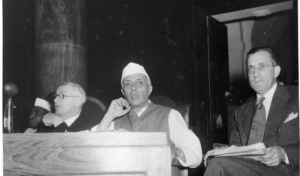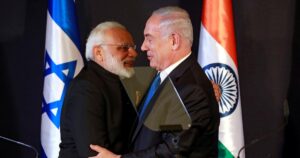Bharat Dogra, Madhu Dogra and Reshma Bharti
Women played a many-sided and very significant role in the freedom movement of India. We see them in the battle fronts of 1857, we see them in the frontline of peaceful protests or satyagrahas, we see them in the Rani ki Jhansi regiment of Azad Hind Fouj, we see them taking up the most courageous assignments in the revolutionary movement, we see them picketing against liquor shops and we see them participating most actively in the various constructive programs including khadi and swadeshi. We see teenager girls from poor families as well as queens from royal families making the supreme sacrifice for India’s freedom.
Rani (Queen) Chenamma of Kittur kingdom (Karnataka) fought a very courageous was against colonial attackers in 1824-25. At one stage she even defeated the powerful British force and then also took special steps for the protection of British women and children. However when a much bigger British force was sent then the brave Rani was captured and imprisoned where she died.
Perhaps the largest number of women freedom fighters became martyrs during the first war of India’s independence in 1857- 88. They fought bravely on many battle fronts in this war and in many roles some of the most celebrated battles are those fought by the Rani of Jhansi in Jhansi (present day Uttar Pradesh) of Bundelkhand region. The Rani had raised a special unit of women’s army to fight the colonial army and her friends who were very close to her like Jhalkari, Moti fought very bravely by her side when the British forces attacked Jhansi.
Even after the defeat at Jhansi (in which Jhalkari Bai died) the Rani had escaped and continued her brave struggle in Kalpi and Gwalier. She died fighting till the end against a superior and bigger force.
Another queen who fight very bravely against the British in the first war of independence was Begam Hazrat Mahal of Avadh. She also constituted a special unit of women fighters and fought very bravely, riding an elephant to supervise the resistance. Later when her army could not face the superior colonial forces she had to escape to Nepal where she breathed her last.
16 year old Kanaklata Barua led a procession of freedom fighters in Gohpur (Assam) in the Quit India Movement of 1942.
When she was trying to unfurl the tricolour flag of the freedom movement she was shot dead by the police.
Matagani Hazra of Assam participated in the Civil Disobedience Movement, the Salt Satyagraha and Quit India Movements, serving prison sentences. In September 1942 while unfurling tricolour near Tamaluk Civil Court she was shot dead by the police.
Kumli Nath, 68 was walking in a protest demonstration in Darang (Assam) with her son who was carrying the tricolour in his hands. The police fired bullets at her son, but she jumped in front of her son, taking the bullets on her body and achieved martyrdom.
Har Kaur, a domestic worker joined the Jalianwala Bagh protest in Amritsar where she was killed along with many others.
Janki Kumari (Ballia, U.P.), Praful Bai and Reeno Bai (Madhya Pradesh), Sindhu Bala Maiti (Bengal), Fui Kumari Devi (Shahbad, Bihar), Mathurabai Mate (Pune) also died in police firing and beatings in various satyagrahas. Similar was the brave story of Mohrani Kurmi (Jaunpur, UP), Gauri Bai Karia (Narsinghpur, Madhya Pradesh), Srimati Paari (Balasore, Odisha) and Lakshmi Dhere (Wardha, Maharashtra).
Kasturba Gandhi was Gandhiji’s very brave companion in several struggles of freedom movement. Arrested in the course of Quit India Movement, she died in prison in 1944).
Gurdayal Kaur of Azad Hind Fauz was injured and died in a hospital in Bangkok.
Jyotirmoy Ganguli left a secure government job and died after being injured seriously in a freedom movement procession in Calcutta in 1945.
Preeilata Wededar died in the course of several courageous and daring action of revolutionaries led by Master Surya Sen in Bengal.
Vanlata Dasgupta participated in revolutionary activities in Bengal at a very young age and died in prison in 1936.
Satyavati was a pillar of socialists within Congress. She was imprisoned several times in the course of the freedom movement and died after being taken to a hospital from jail.
Sarsibala Das was beaten badly in Burdaman (Bengal) at the time of Quit India protests. She was pregnant at the time and she died soon after the cruel beating by the police.
Lakshmi Bai Bhaikar, Subhadra Bai Gosni, Srimati Pujaji, Posni Bai Rajling and Champa Sumade died in the struggles against Razakars.
Sajida Bano and Farichi died in struggles in Kashmir.
Each one of these martyrdoms is a story of great struggle and courage. The brief review above gives only a glimpse this great saga of fighting and dying for the most noble cause by the women of India.




